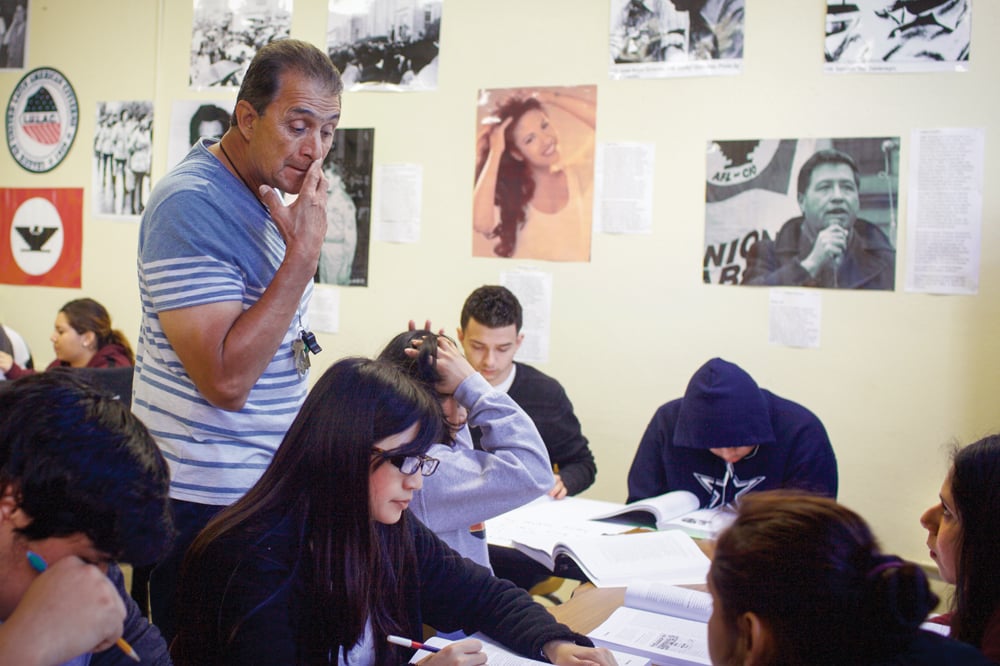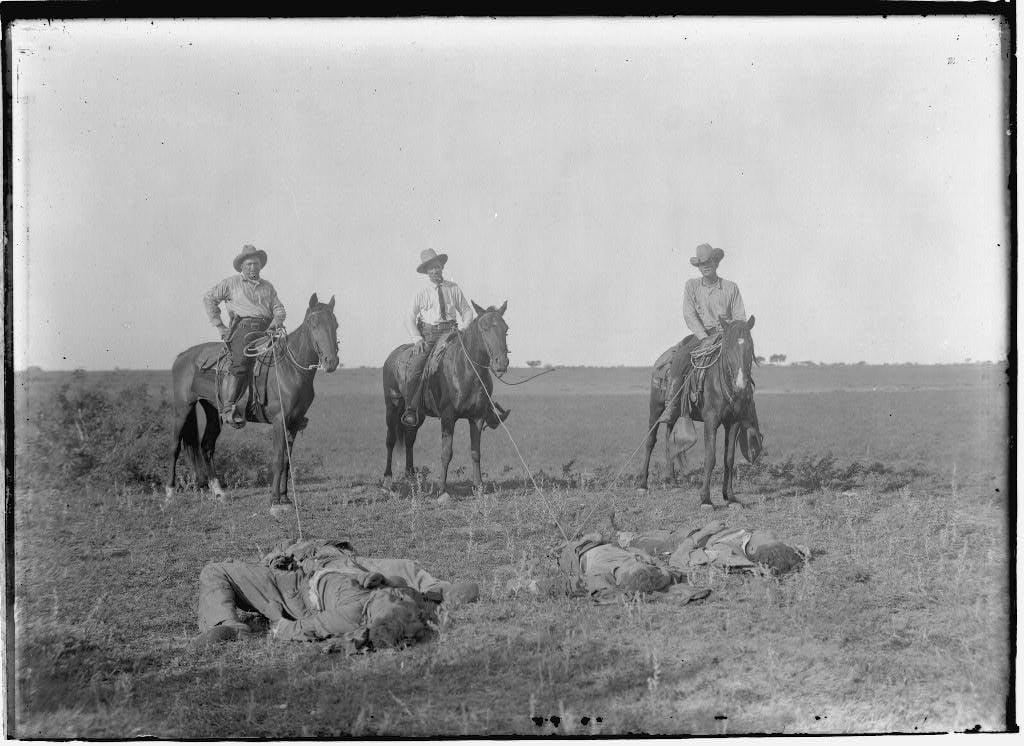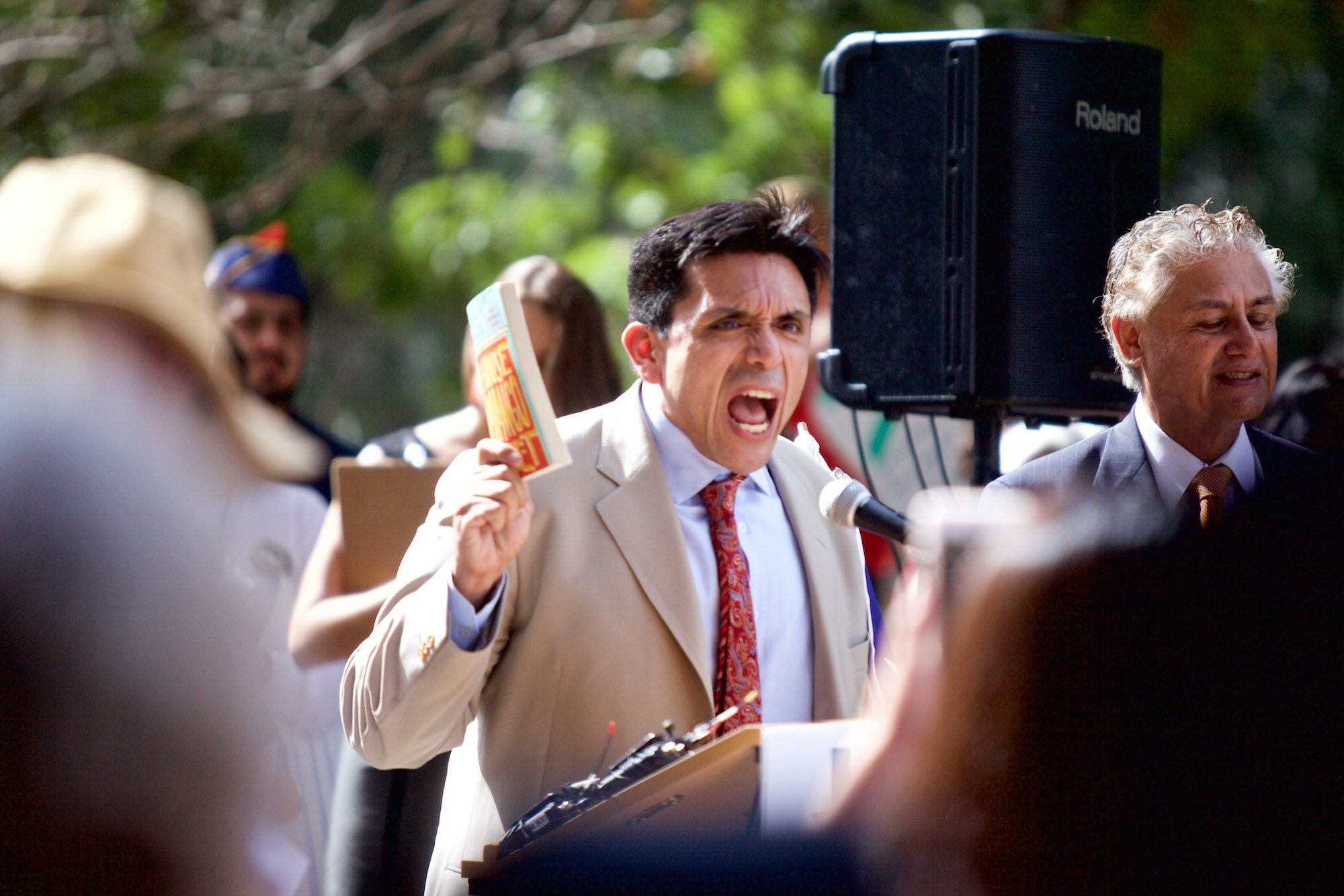
Dragging the State Board into the Present

A version of this story ran in the June 2015 issue.
Above: David Arriaga checks on students in his Mexican-American studies class at Houston’s Stephen F. Austin High School in April.
When Houston author and activist Tony Diaz lit a cultural fire at the State Board of Education last year by demanding that Texas honor its majority Hispanic student body with a high school course in Mexican-American studies, the board did what it does best: It burned.
Board member David Bradley (R-Beaumont), perhaps as a sort of thought exercise, proposed adding a course in Irish-American studies to honor his heritage. Board member Pat Hardy (R-Weatherford) deemed the course wholly unnecessary. “We’re citizens of the United States, not citizens of Mexico,” she said.
Diaz asked, “Who will walk with us into this new America, and who will turn their backs on us?”
MerryLynn Gerstenschlager of the Texas Eagle Forum wondered aloud what sort of “new America” Diaz had in mind and why the Founding Fathers weren’t good enough for him.
The board reached a murky compromise, agreeing to request textbooks for a few ethnic studies subjects, including Mexican-American studies. It set 2017 as the date the programs should be in place. However, it took an otherwise hands-off approach by allowing any school that wants to teach Mexican-American studies to do so, but not placing the state in the position to tell them how.
Inside the hulking, historic Stephen F. Austin High School in Houston’s East End, David Arriaga met the board’s invitation this year with a new course in Mexican-American history. On a Wednesday in late April, 22 students sat in Arriaga’s class with copies of F. Arturo Rosales’ Chicano! The History of the Mexican American Civil Rights Movement open on their desks. Working in groups, they wrote on poster-sized sheets of paper about how the Chicano movement of the ’60s differed from state to state across the Southwest.
Arriaga, a cross-country coach and former assistant principal, isn’t exactly the sort of fist-raising revolutionary that conservatives feared would run a course like this. “I’m just not that militant,” he says. While students in California were staging walkouts 50 years ago, he was growing up in Seguin, picking cotton when he wasn’t in school. But he recognizes that, like his students, he is better off because of the people who agitated back then for fair wages and better schools. He wants his students to see themselves in that history. “I tell ’em, ‘For everything that happens, we have somebody to thank for it,’” Arriaga says. “It’s people their age or a little older participating in a cause.”
That message and work by Arriaga and others to give students a chance to see their home lives reflected in the classroom have proved to be powerful. Researchers in Arizona last year found a “surprisingly strong” relationship between participation in a Mexican-American studies course and a student’s likelihood to pass standardized tests and to graduate. It’s an idea that shouldn’t be as novel as it is: Give students a curriculum that fits the way they experience the world. Now teachers in other parts of Texas are developing curriculum guides and lessons to help schools offer courses in history, literature, music and art with a Mexican-American focus—stepping in to help, basically, where the state board demurred.
In Mission, social studies teacher Victoria Rojas just finished her first year teaching a dual-credit course with South Texas College professor Trinidad Gonzales. In San Antonio, Palo Alto College professor Juan Tejeda teaches a dual-credit course at KIPP College Preparatory High School. University of Texas researchers Angela Valenzuela and Emilio Zamora just completed the first semester of their Academia Cuauhtli, a Saturday school to teach students as early as fourth grade about social justice and cultural heritage.
“The idea is really to help children feel secure in their communities, that their own knowledge that they bring with them from their households [is] important to them in their own life,” Valenzuela told the Observer.
Her program is a partnership with Austin ISD, the City of Austin, Austin’s Mexican American Cultural Center and a community-based organization called Nuestro Grupo. Along with the classes and field trips for 33 students this year, Academia Cuauhtli is developing curriculum for use across all of Austin ISD.
These aren’t the first classes of their kind in Texas. In Pasadena, Agustin Loredo has taught a high school course in Mexican-American studies for eight years. What’s new is that so many teachers—including all of those mentioned here—are building lesson plans to help others spread the classes even faster. And the popularity of Arriaga’s class among Houston’s school leaders, says trustee Juliet Stipeche, prompted the district to apply to make Mexican-American studies a state-approved “innovative course,” a move that could finally force the state to throw its support behind the class.
After Stipeche raised the proposal at a school board meeting, Houston school trustees threw their unanimous support behind it. Earlier this month, Houston ISD got word from Texas Education Agency staff: The course was approved for any district in the state to pick up as an elective starting this fall.

